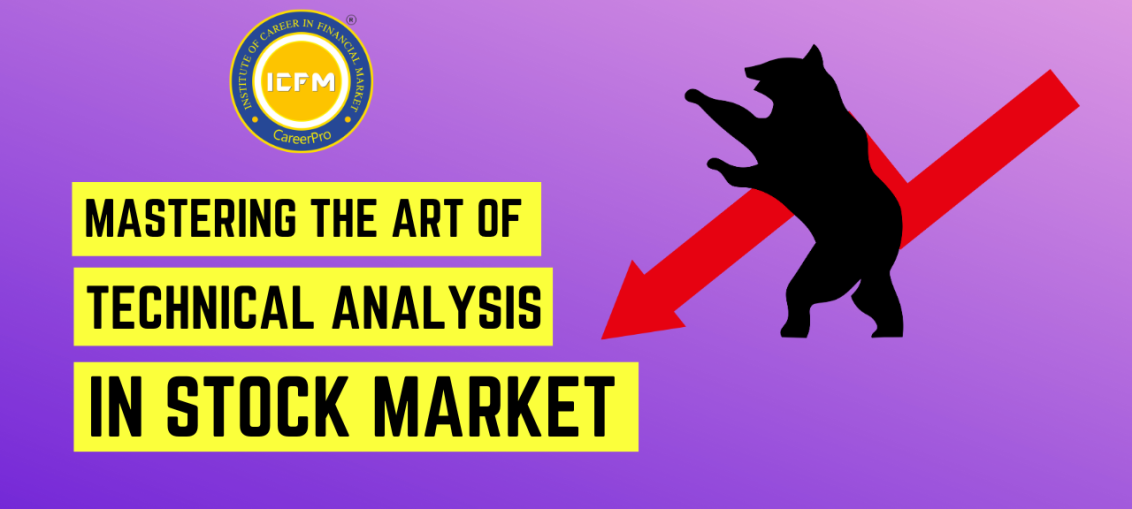
Introduction to Technical Analysis
Welcome to the world of technical analysis! In this article, we’ll dive deep into the fascinating realm of understanding price charts, deciphering market trends, and using historical data to make informed trading decisions. Whether you’re a seasoned trader looking to sharpen your skills or a newcomer intrigued by the world of finance, this guide is your gateway to mastering the art of technical analysis.
The Importance of Technical Analysis
Unlocking Market Insights
Technical analysis course is the study of historical price and volume data to predict future price movements. It provides traders and investors with valuable insights into market sentiment, helping them make informed decisions.
Complementing Fundamental Analysis
While fundamental analysis examines a company’s financial health and performance, technical analysis focuses on market psychology and price patterns. Combining both approaches can enhance your trading strategy.
Getting Started with Technical Analysis
Understanding Price Charts
Price charts are the canvas of technical analysis. They display a stock’s historical price movements over time. The most common types of charts are line charts, bar charts, and candlestick charts.
Key Technical Indicators
Technical analysis relies on various indicators, such as moving averages, Relative Strength Index (RSI), and MACD, to analyze price trends and momentum. Learning how to interpret these indicators is crucial for successful analysis.
The Art of Chart Patterns
Recognizing Trends
Identifying trends is a fundamental aspect of technical analysis. Trends can be upward (bullish), downward (bearish), or sideways (range-bound). Understanding trendlines and trend reversal patterns is essential.
Support and Resistance Levels
Support and resistance levels are price points where stocks tend to stop and reverse. Recognizing these levels can help traders make strategic entry and exit decisions.
Applying Technical Analysis to Trading
Entry and Exit Points
Technical analysis provides traders with specific entry and exit points based on price patterns and indicators. This precision can improve your trading performance and risk management.
Risk Management
Managing risk is paramount in trading. Technical analysis equips you with tools like stop-loss orders and position-sizing strategies to protect your capital.
Developing Your Technical Analysis Skills
Continuous Learning
The world of technical analysis is dynamic and ever-evolving. Stay updated with the latest trends, strategies, and tools through books, courses, and online communities.
Real-World Application
Practice makes perfect. Apply your technical analysis skills through paper trading or small real-money trades to gain practical experience.
Conclusion: Harness the Power of Technical Analysis
In conclusion, technical analysis is a valuable skill for traders and investors. By understanding price charts, recognizing trends, and applying key technical indicators, you can make informed decisions in the dynamic world of finance. So, embark on your journey to mastering technical analysis and unlock the potential for success in the financial markets.
FAQs (Frequently Asked Questions)
1. What is technical analysis, and why is it important?
Technical analysis course is the study of historical price and volume data to predict future price movements. It’s important because it provides valuable insights into market sentiment and complements fundamental analysis.
2. How can I get started with technical analysis?
Begin by understanding price charts and key technical indicators. There are many resources available, including books and online courses, to help you learn the basics.
3. What are some common technical indicators used in analysis?
Common technical indicators include moving averages, Relative Strength Index (RSI), Moving Average Convergence Divergence (MACD), and Bollinger Bands.
4. How do I recognize trends in technical analysis?
Trends can be identified by examining price charts and looking for patterns of higher highs and higher lows (bullish trend) or lower highs and lower lows (bearish trend).
5. How can I manage risk while using technical analysis in trading?
Risk management techniques include setting stop-loss orders, diversifying your portfolio, and sizing your positions appropriately based on your risk tolerance.
Tags:- Technical Analysis Course, Technical Analysis Courses, Technical analyst course, Technical analyst courses, Technical analysis, How to learn stock market, Learn Stock Market, Stock Market Analysis,